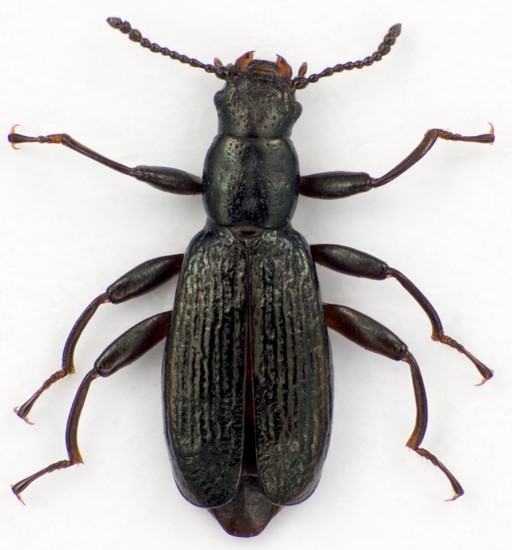Last year, Marianne started her PhD-project in the FEZ-group. Marianne kick-started her project with a fieldtrip to the east-coast of USA to collect beetles. The beetles, which live in the cracks and crevices on rocky shores, proved to be difficult to find. With hammer and chisel, she managed to find the beetles that was hiding deep within the cracks of the stone.
The beetles from genus Aegialites are fairly small (3-5 mm), wingless and they are distributed on the Pacific coast stretching from Japan to USA. The beetles live in a harsh environment, with daily fluctuations in temperature, wave action and salinity. Due to this, the beetles have obtained both morphological, physiological and presumably also behavioral adaptations allowing them to persist and thrive. This includes morphological characters such as robust claws, long tarsi and wide coxae making them able to strongly cling to the rocks.
As the beetles neither have wings nor any propagative larvae, dispersal is difficult and challenging; yet they are widely distributed. Additionally, their special and isolated habitat, often separated by either sandy beaches or seawater, is one of the reasons for the spatial separation of populations, which might ultimately lead to speciation. Combined with low or no dispersal possibilities, questions are raised if populations at different localities truly are different species, and if so, how different they are. Moreover, have these species been subjected to convergent or parallel evolution, can they hybridize and how much, if any, gene flow is present?
To answer these questions, Marianne will utilize the material she collected in USA additional to material from other museums. First, she wish to resolve the taxonomy of the genus and create a molecular phylogeny with all known species to date (?30 species). Further, a full genome will be sequenced, also yielding the opportunity to conduct re-sequencing to obtain SNP-data suitable for population genetic studies for detection of gene flow and hybridization.
Additional fieldwork to Japan is planned for spring 2021 to further supplement her beetle collection – so stay tuned for updates!

Text in the teaser: On December 16th we will reveal what Marianne is doing on the other side of the world and at these beaches. Hint: It is not marine.
Picture in the teaser:

![]()

Very interesting project! Looking forward to know more about it 🙂